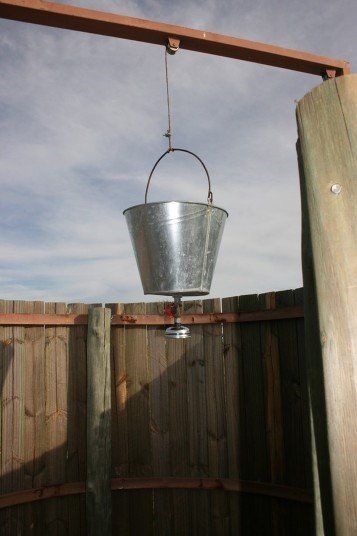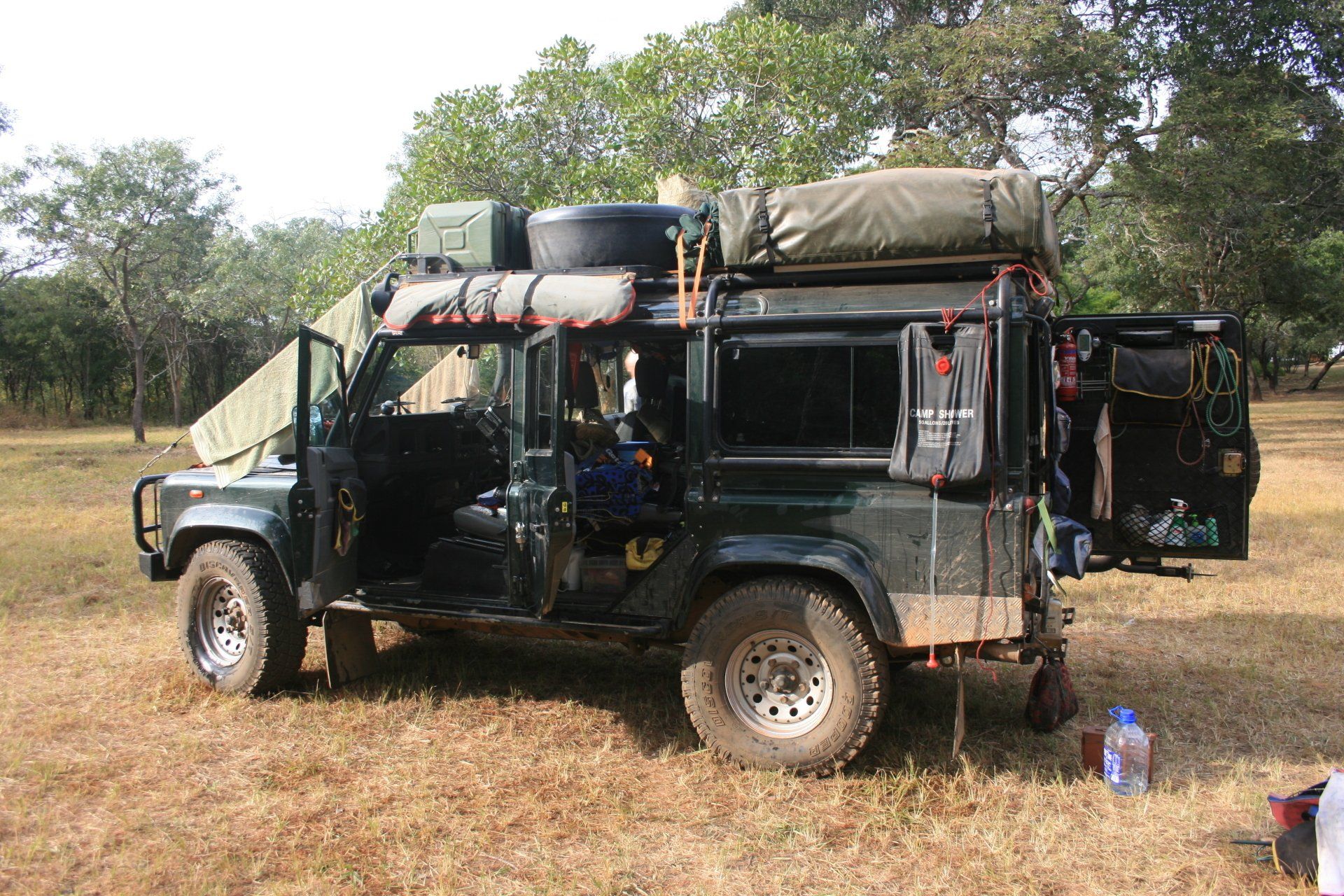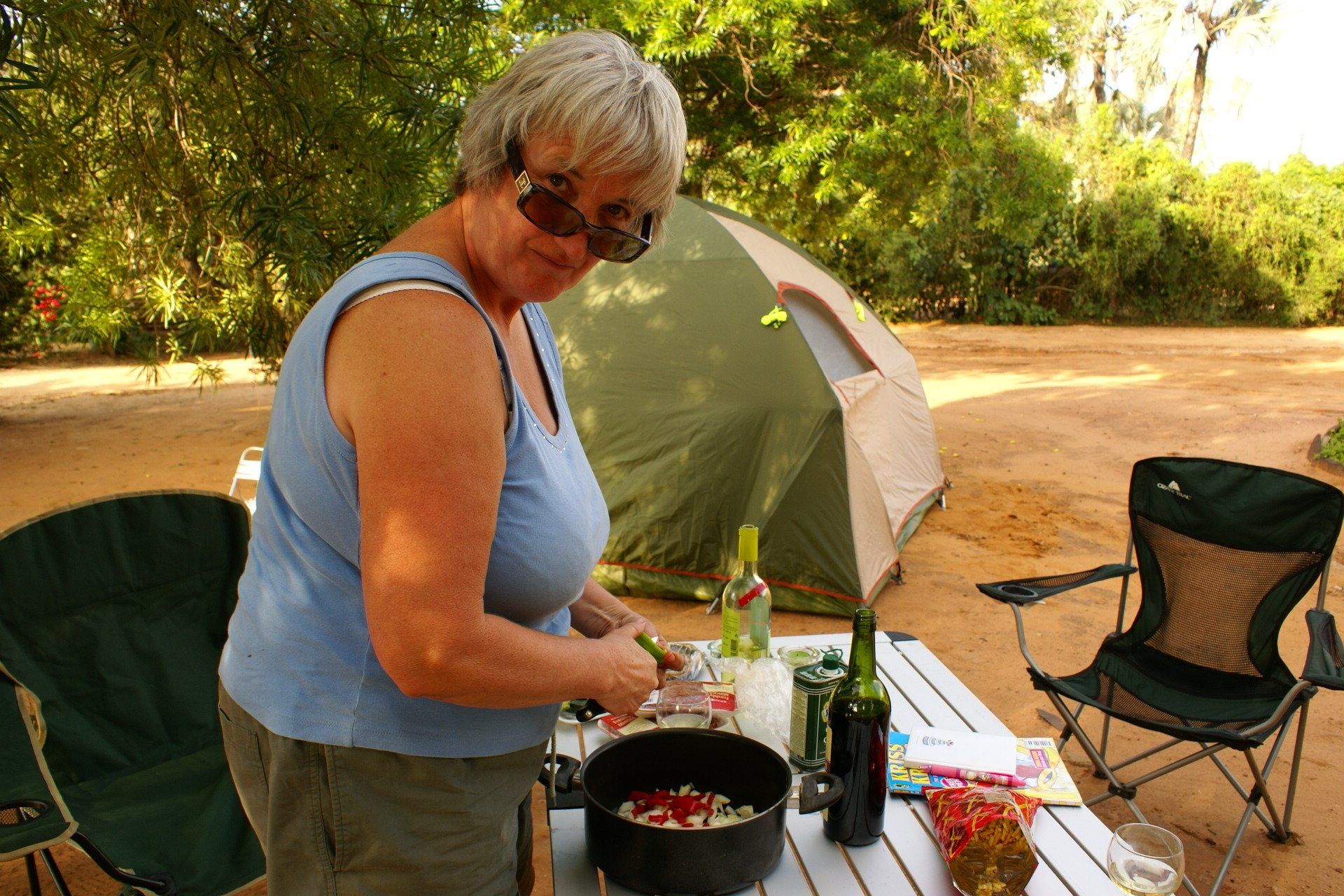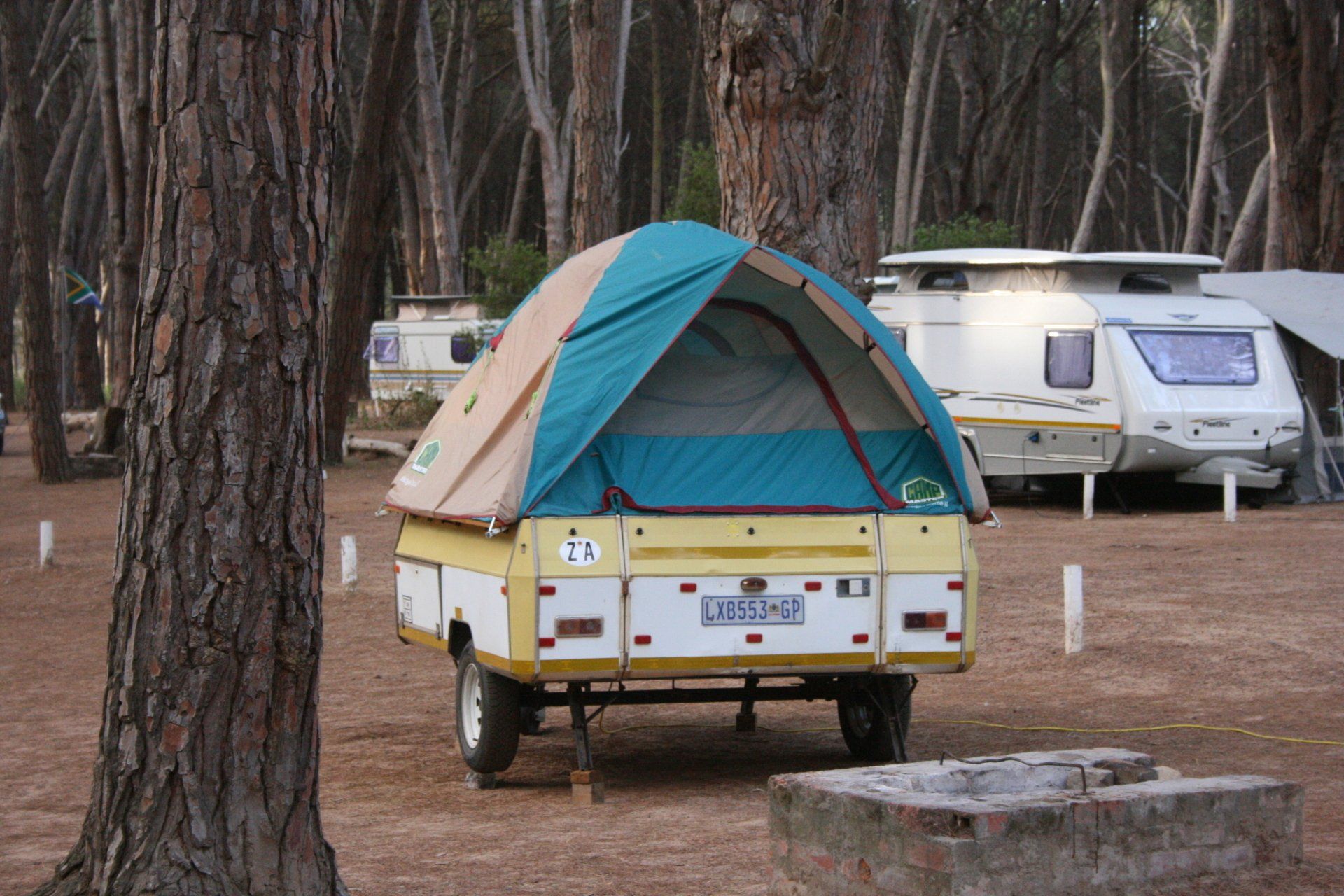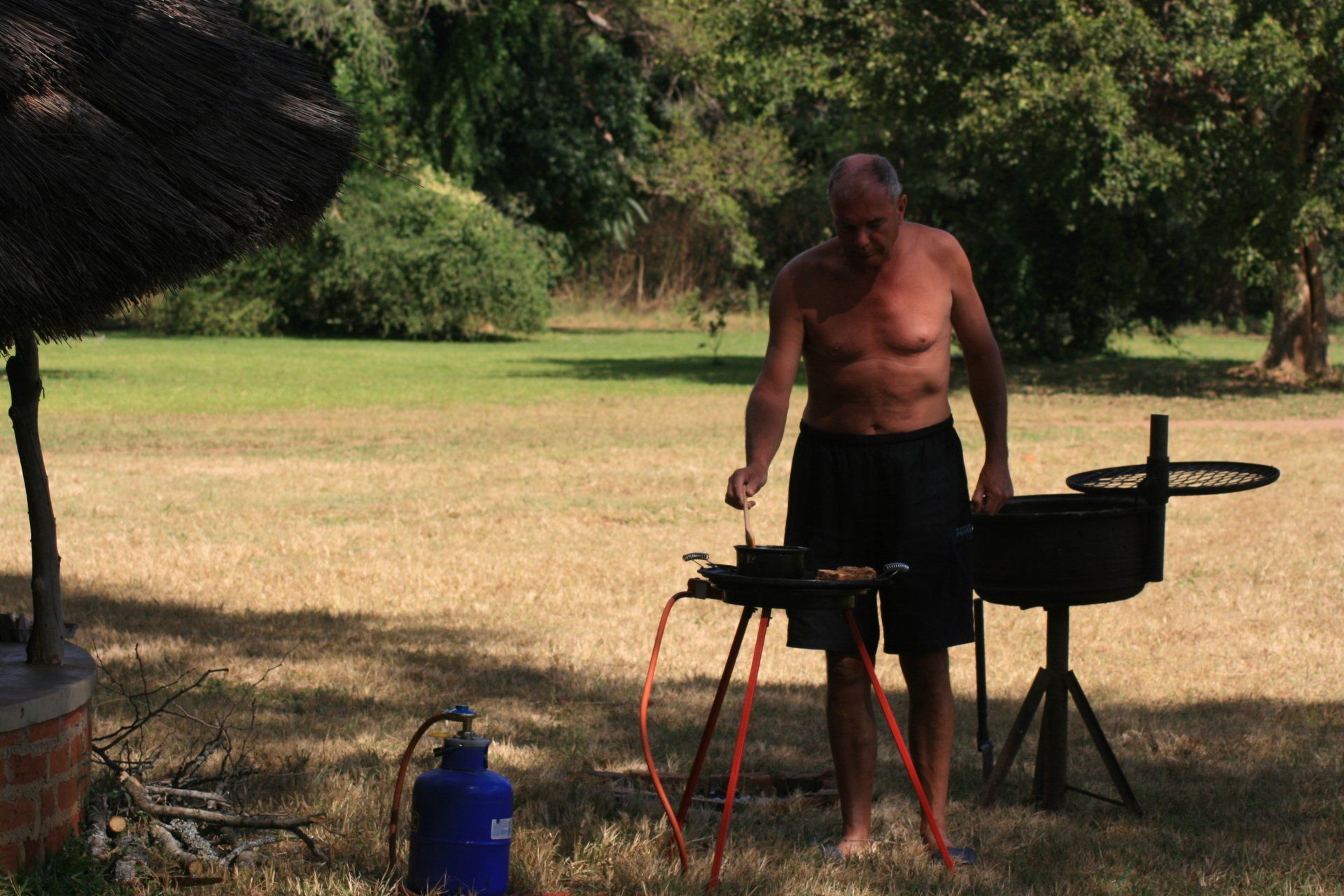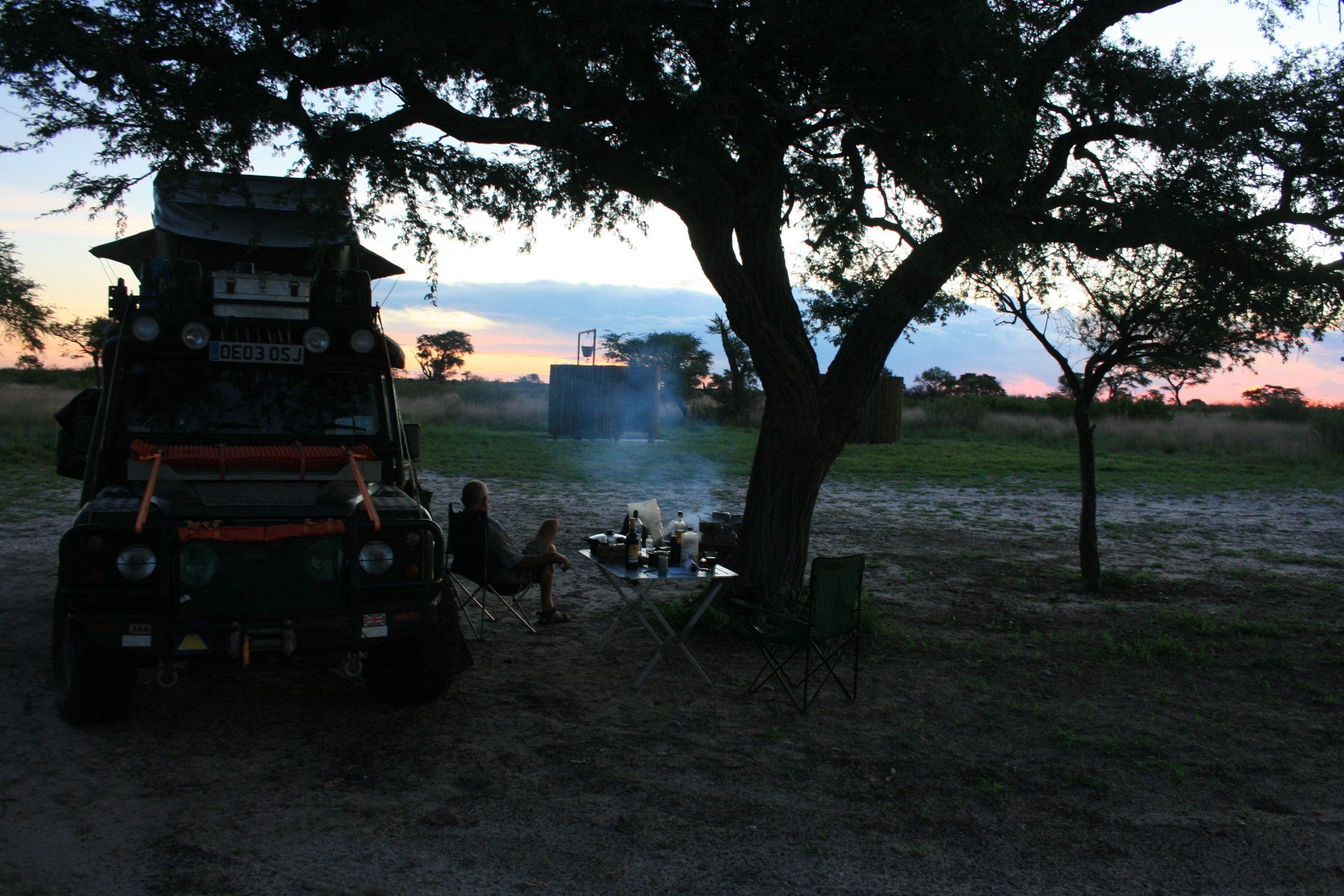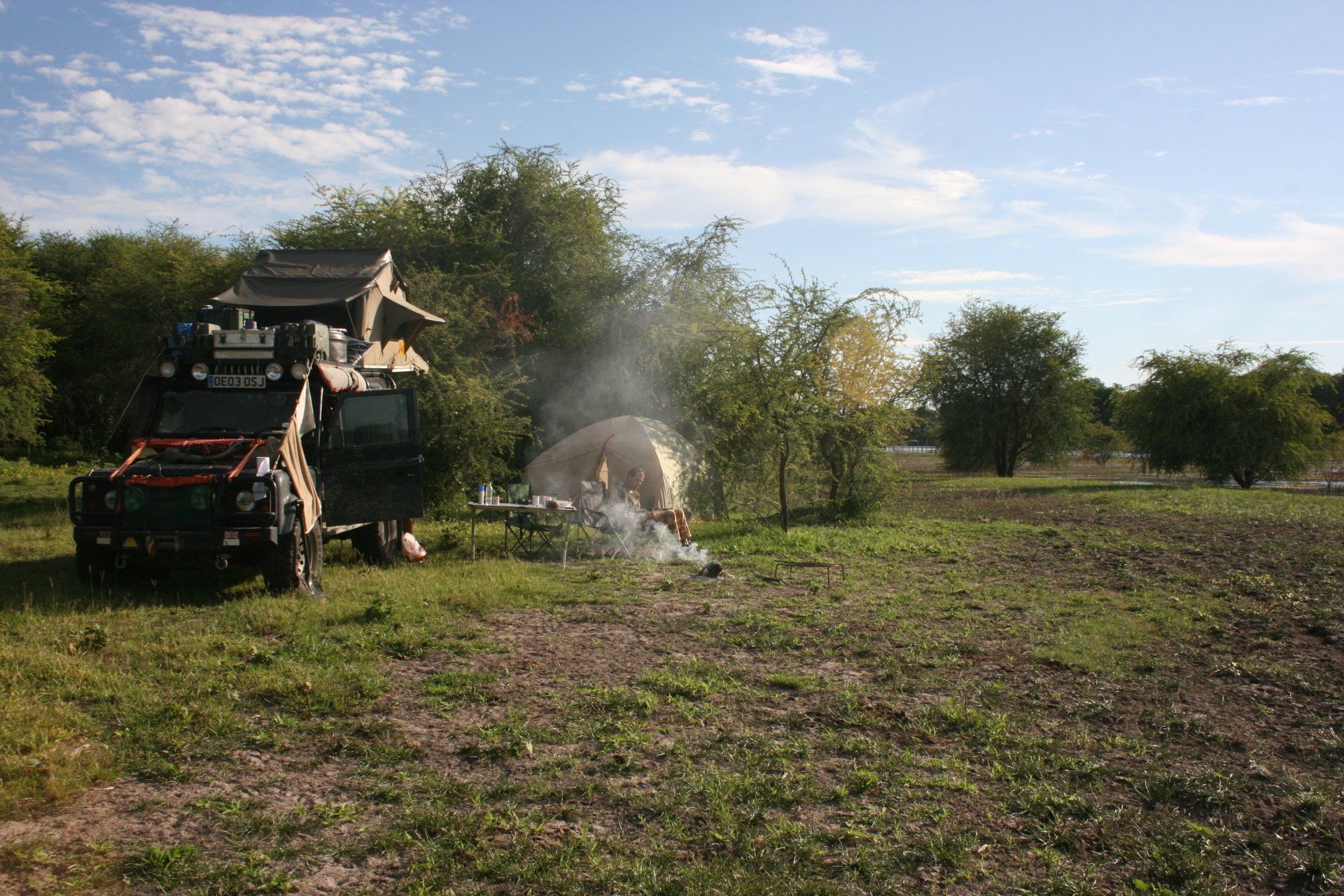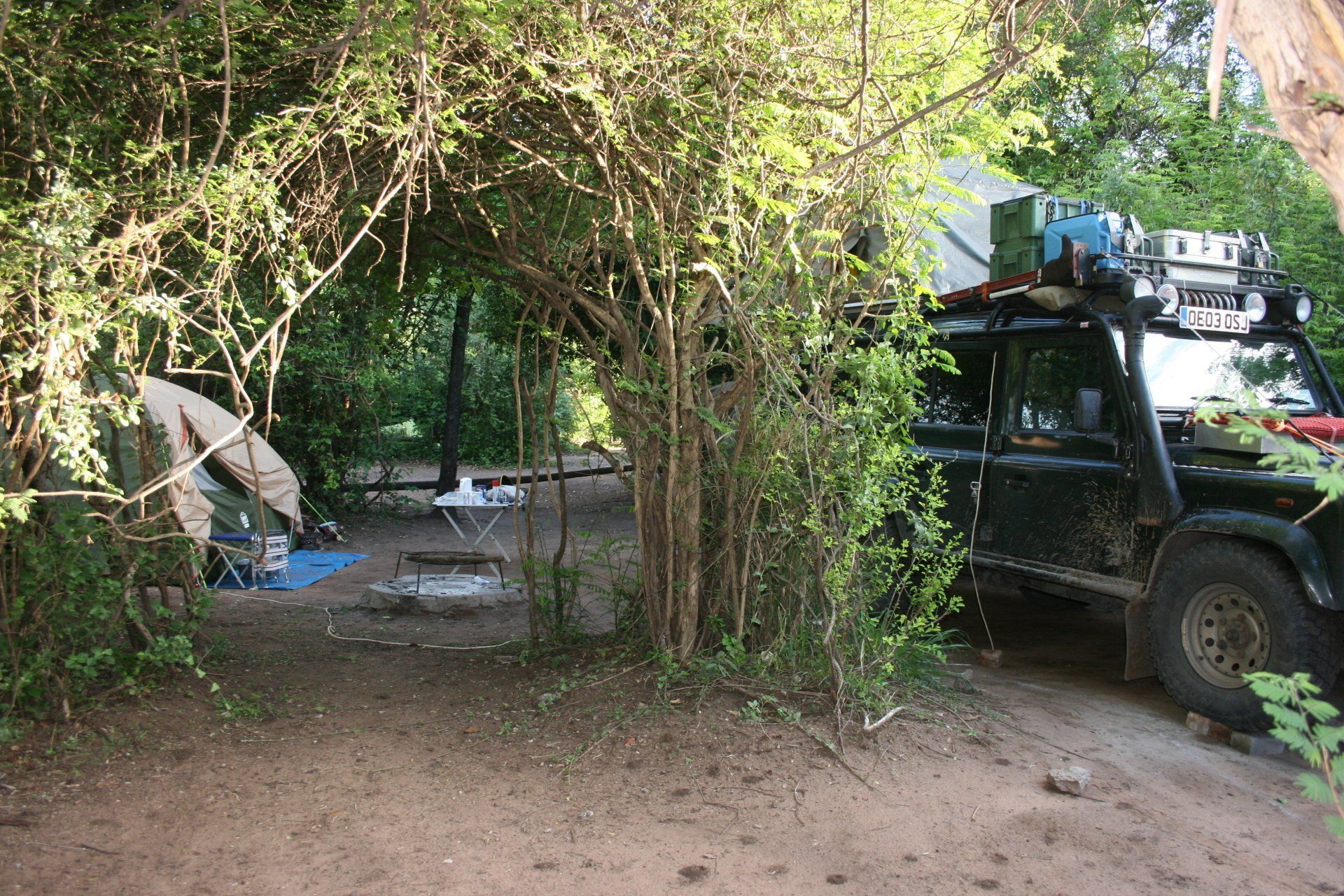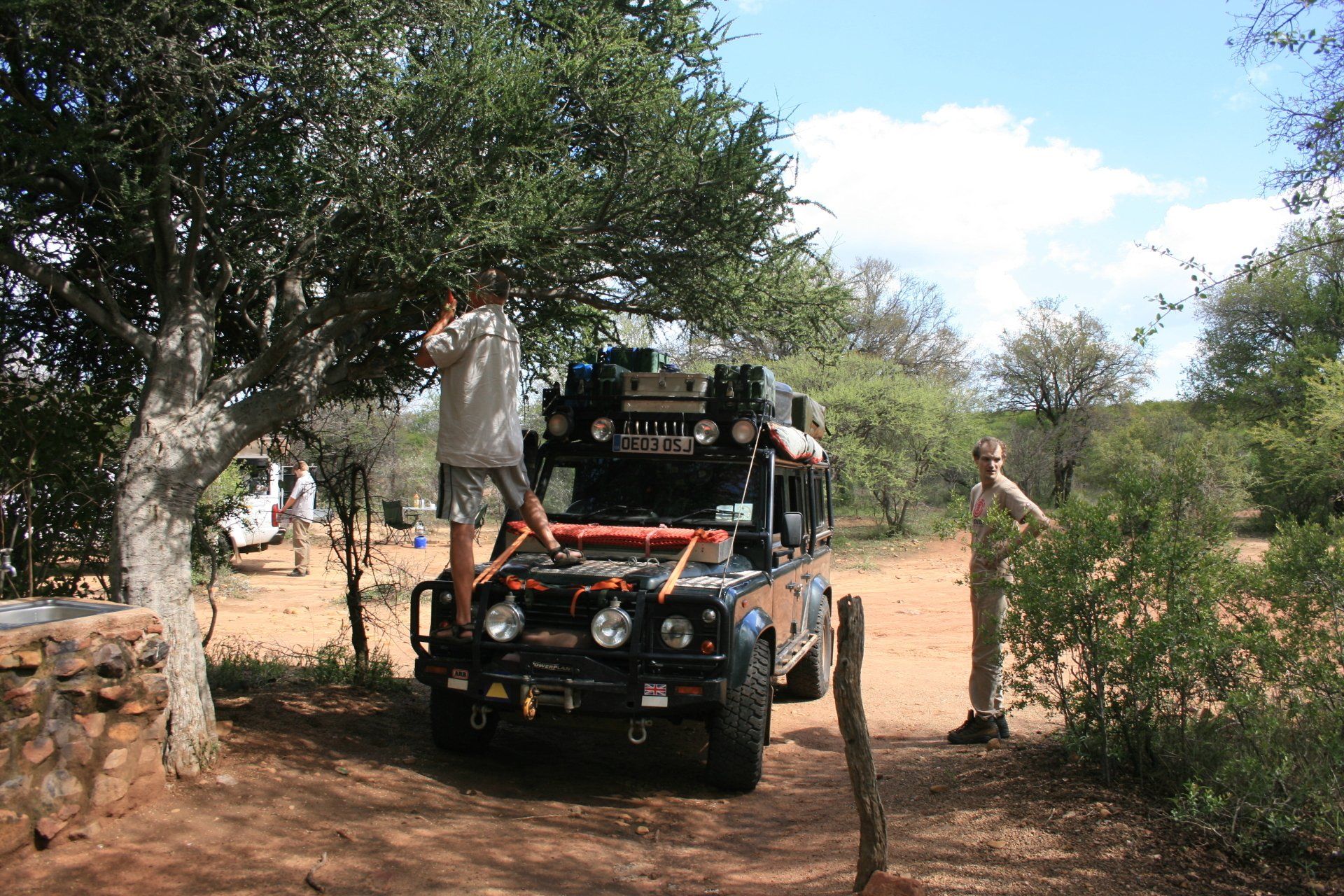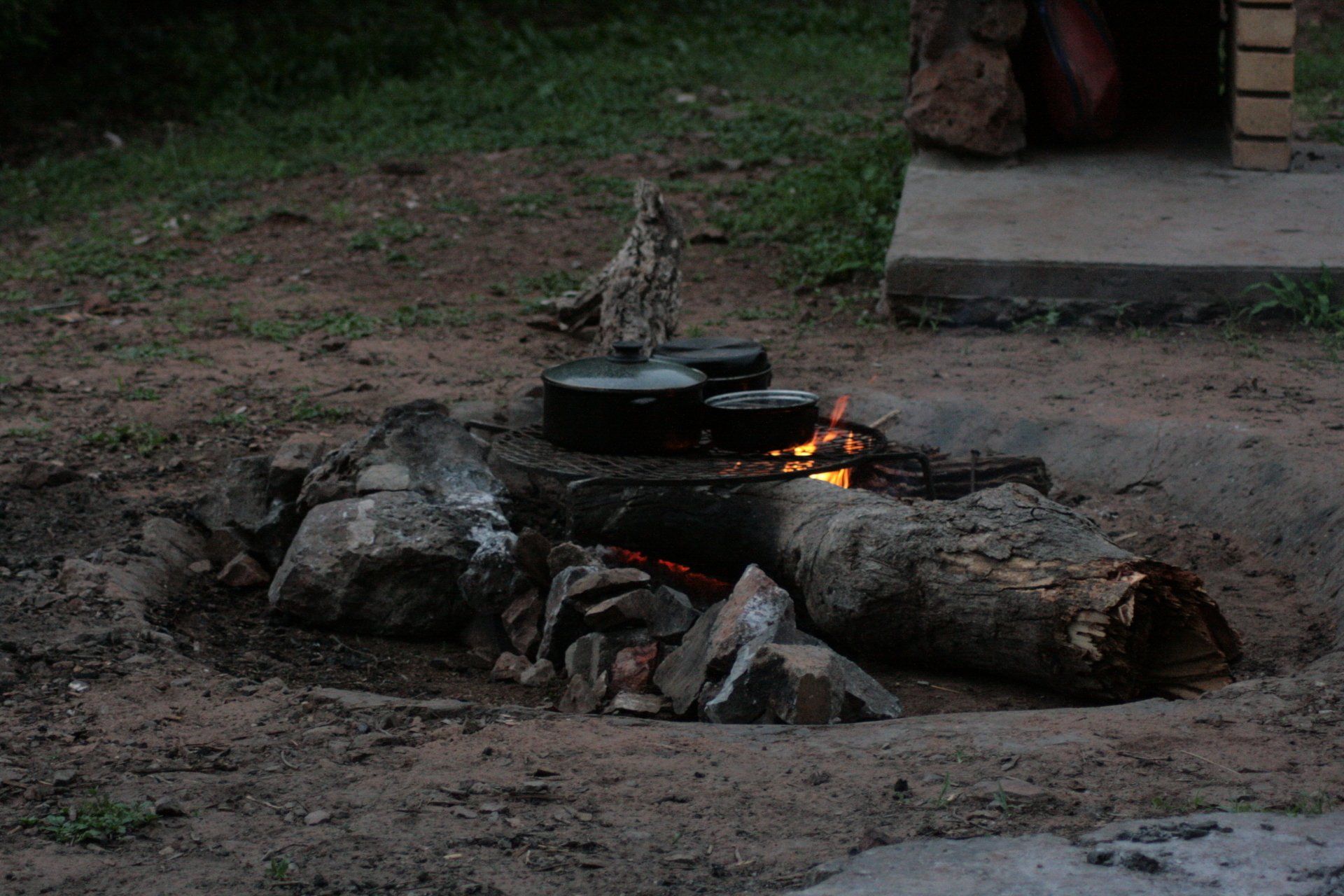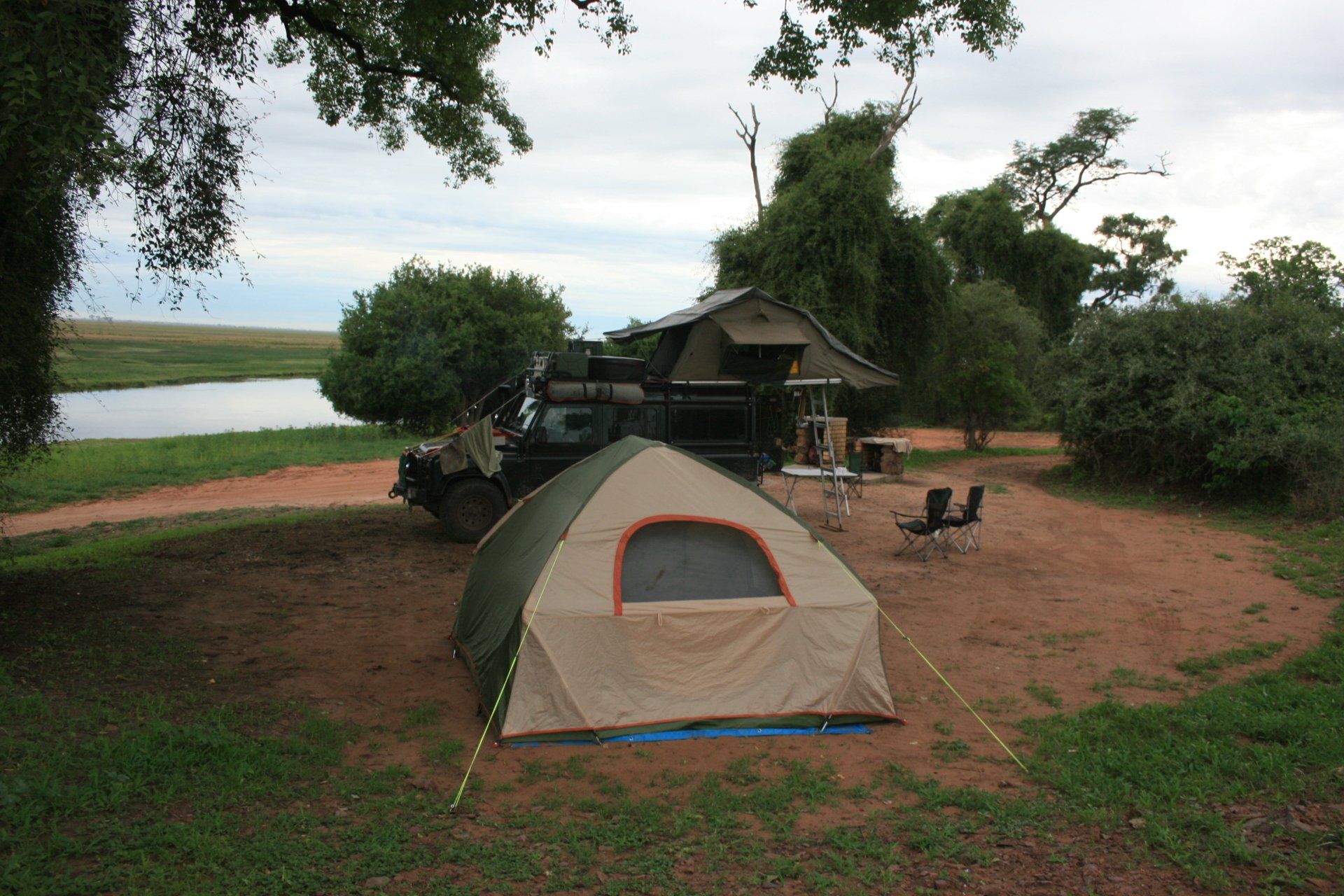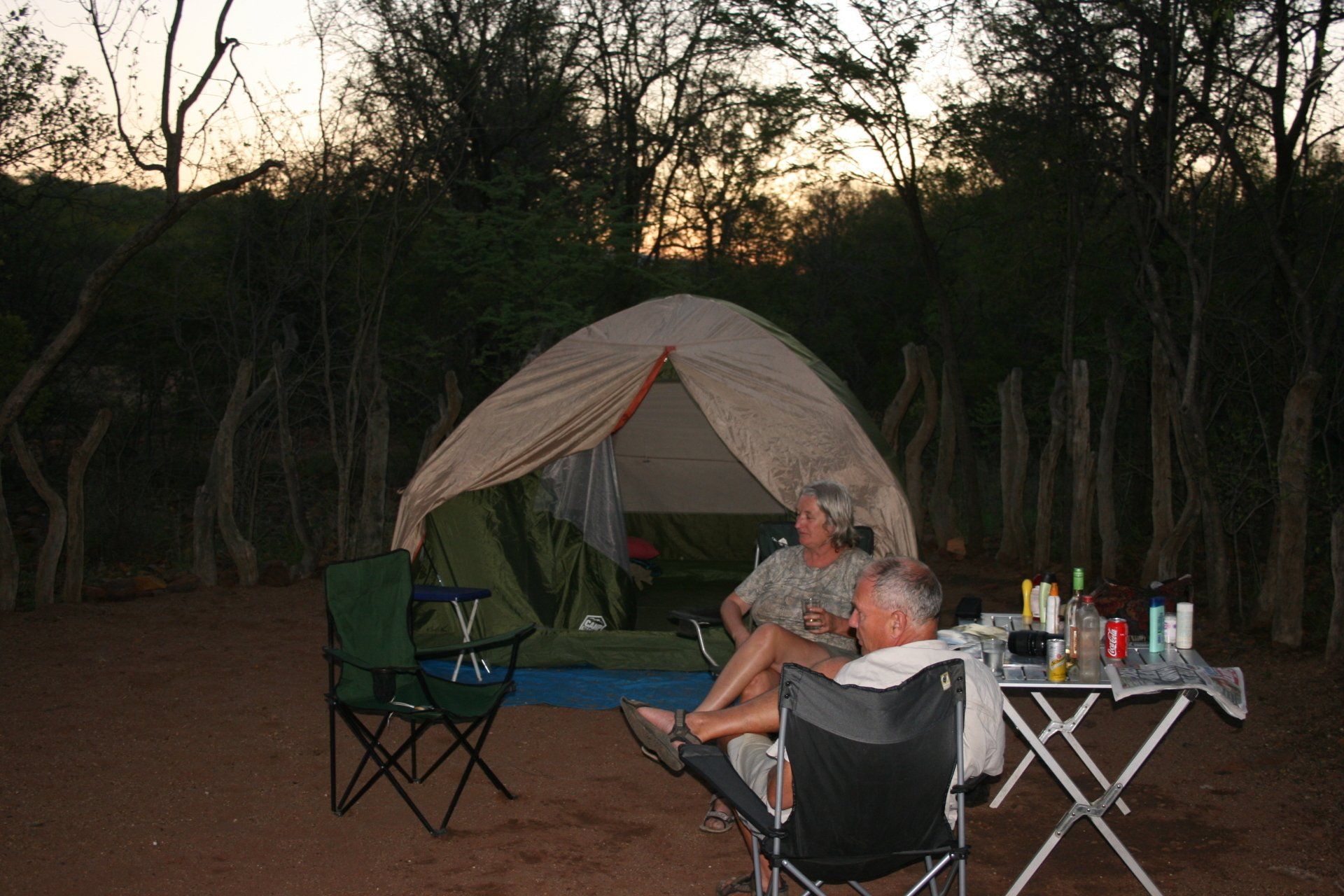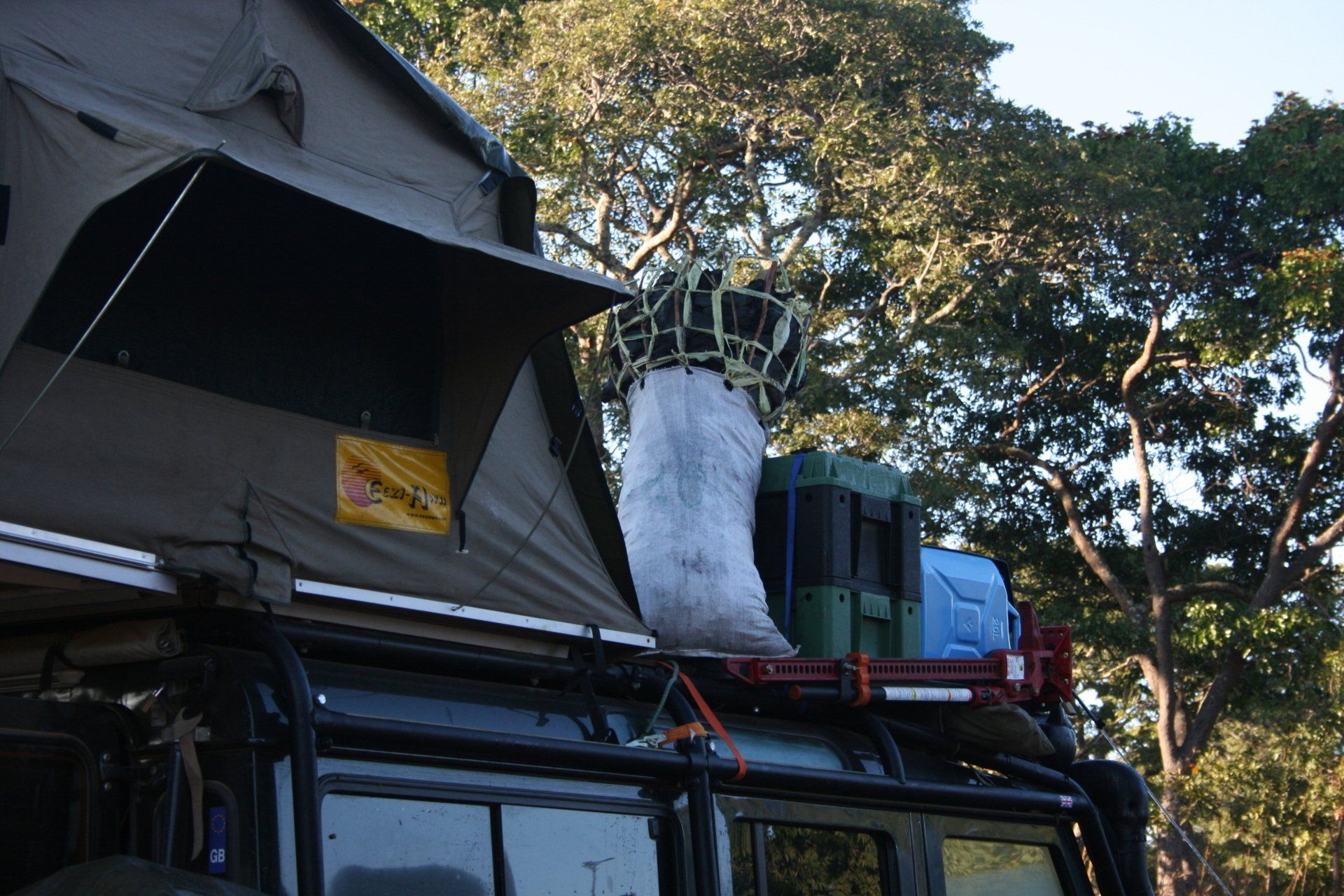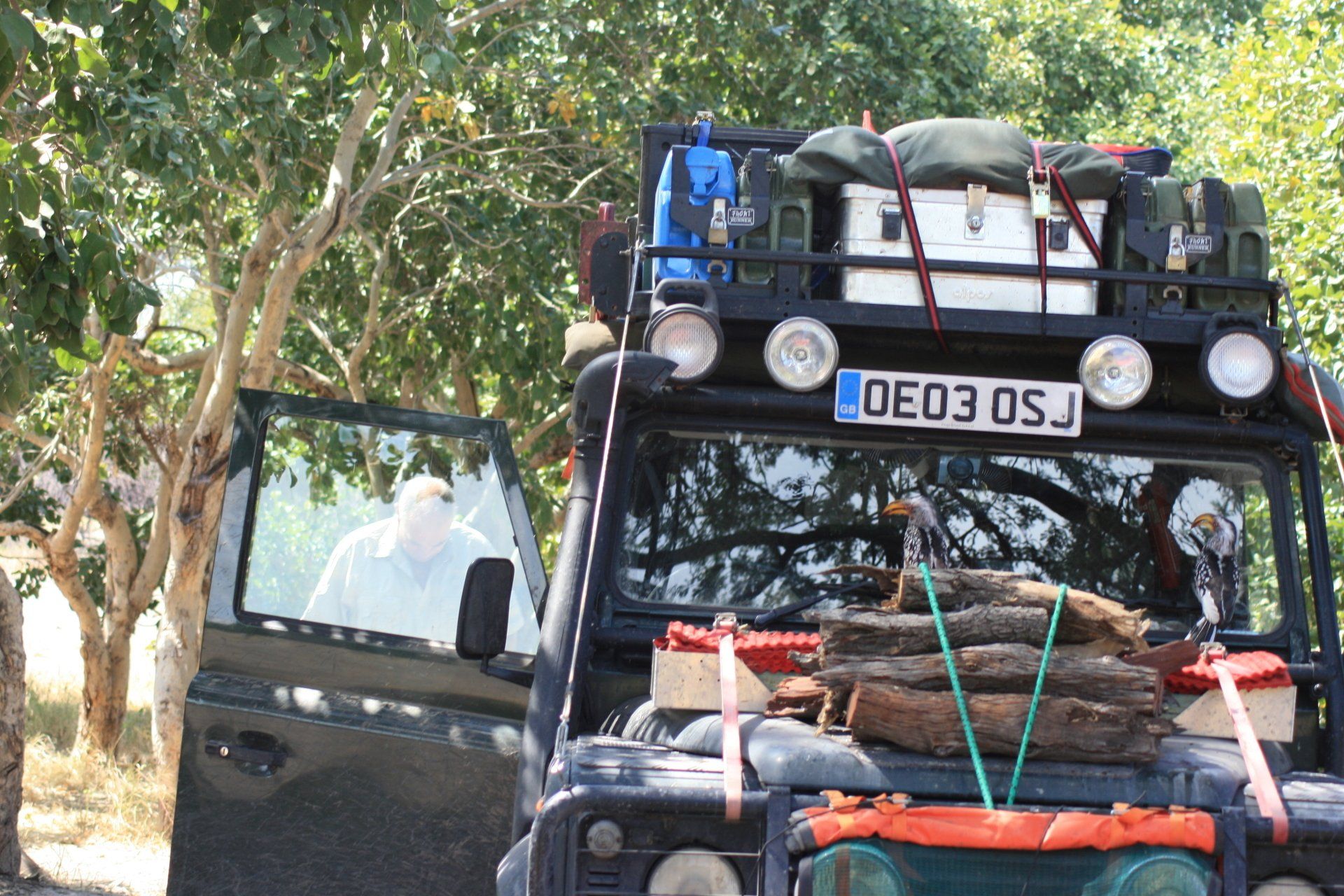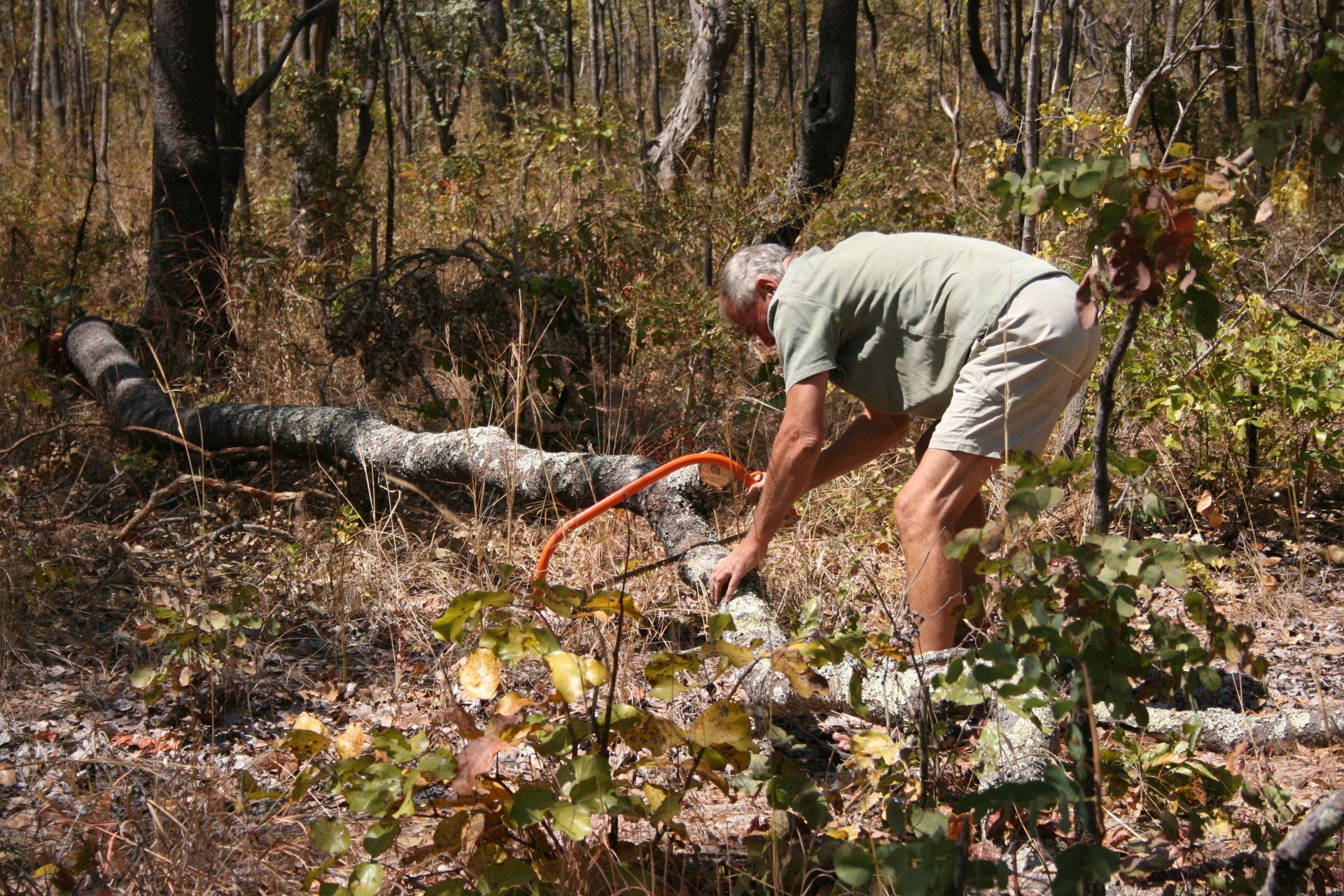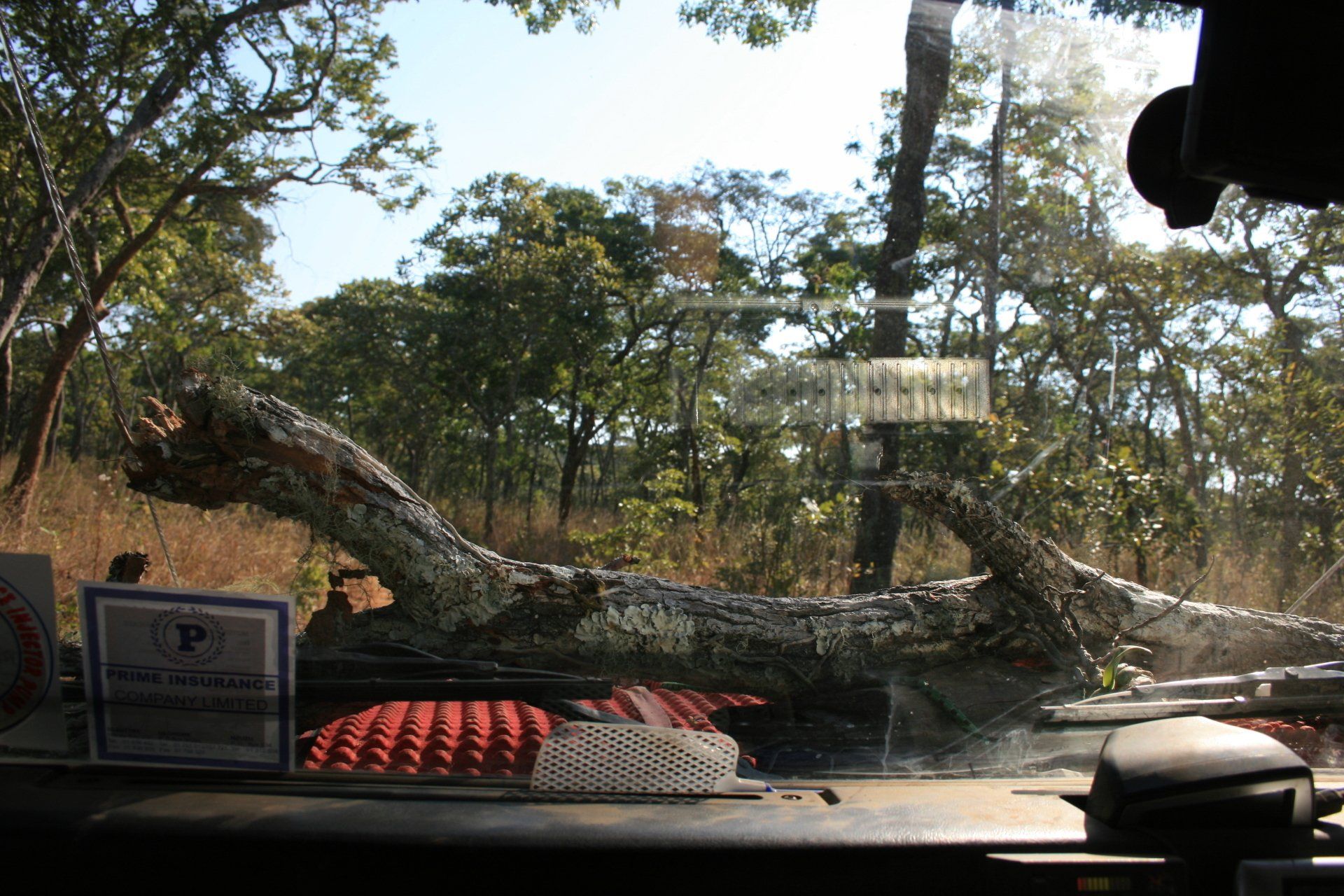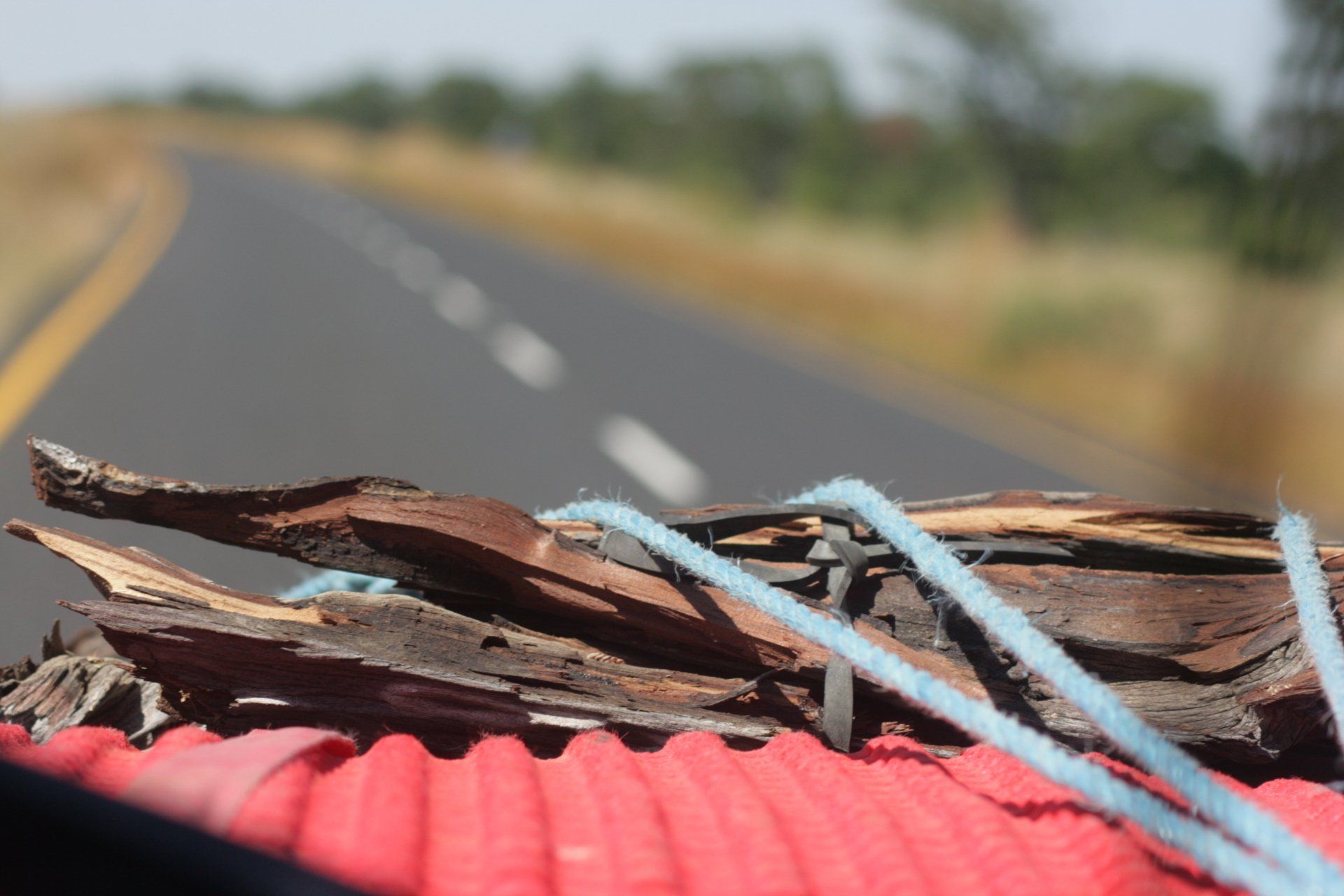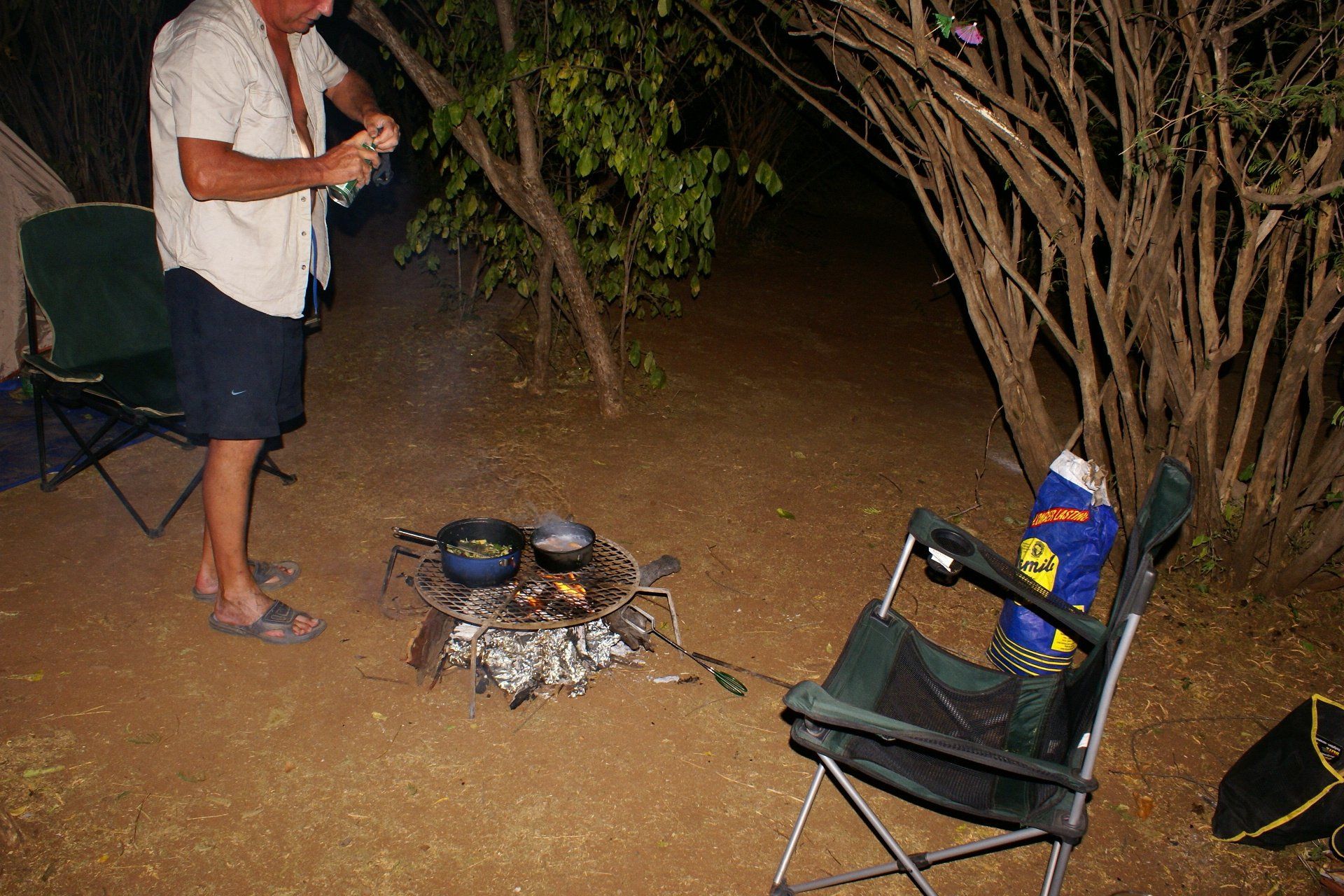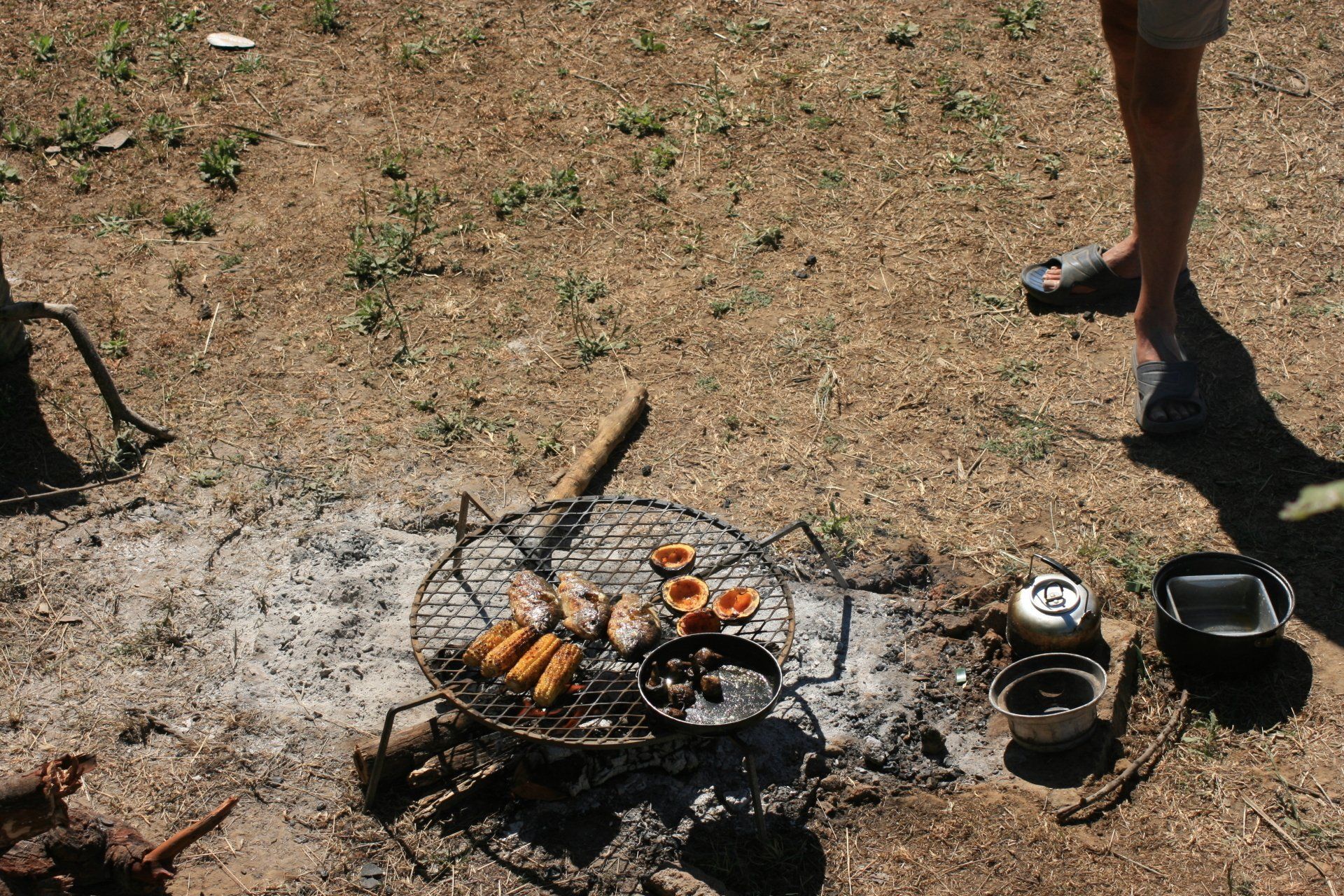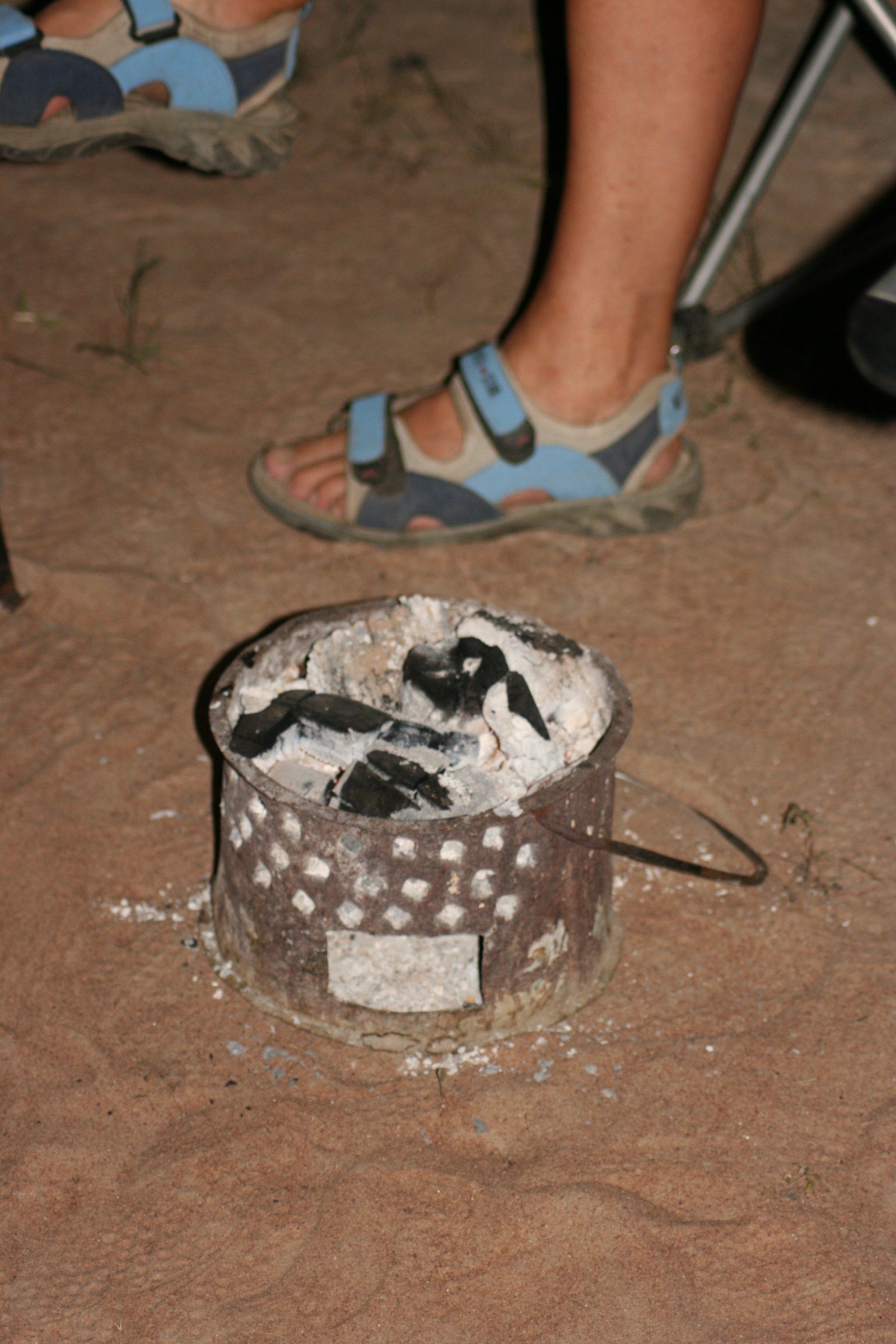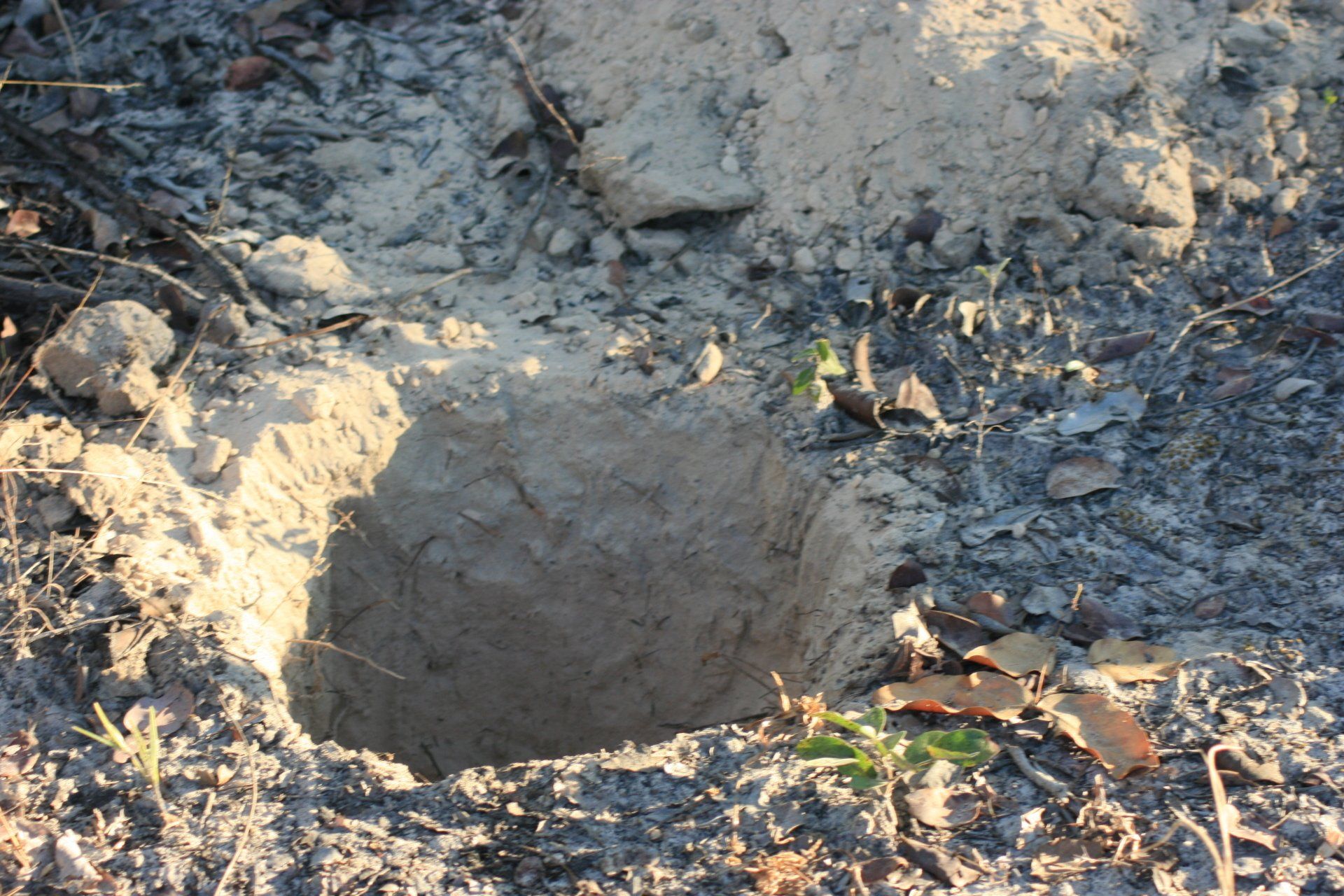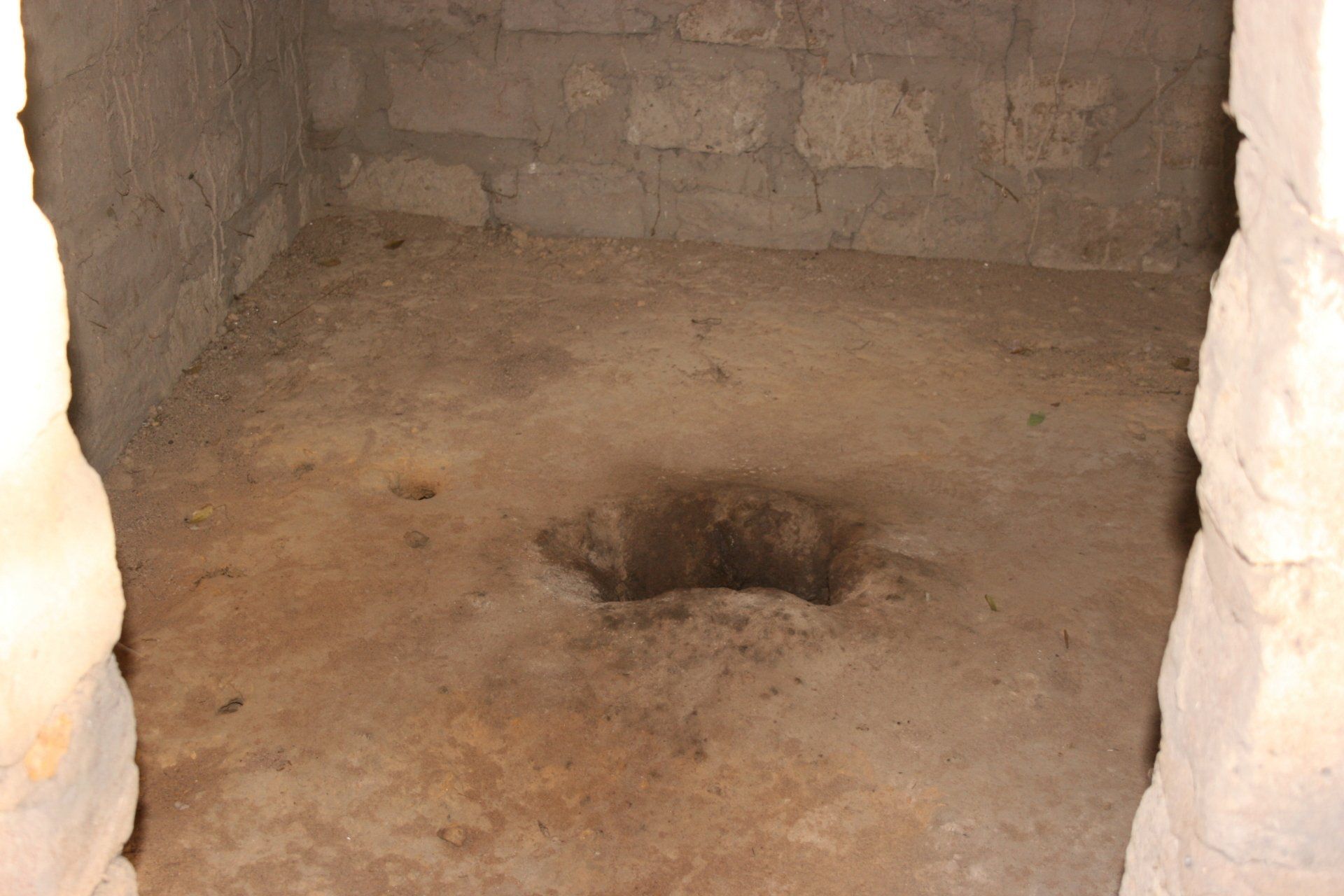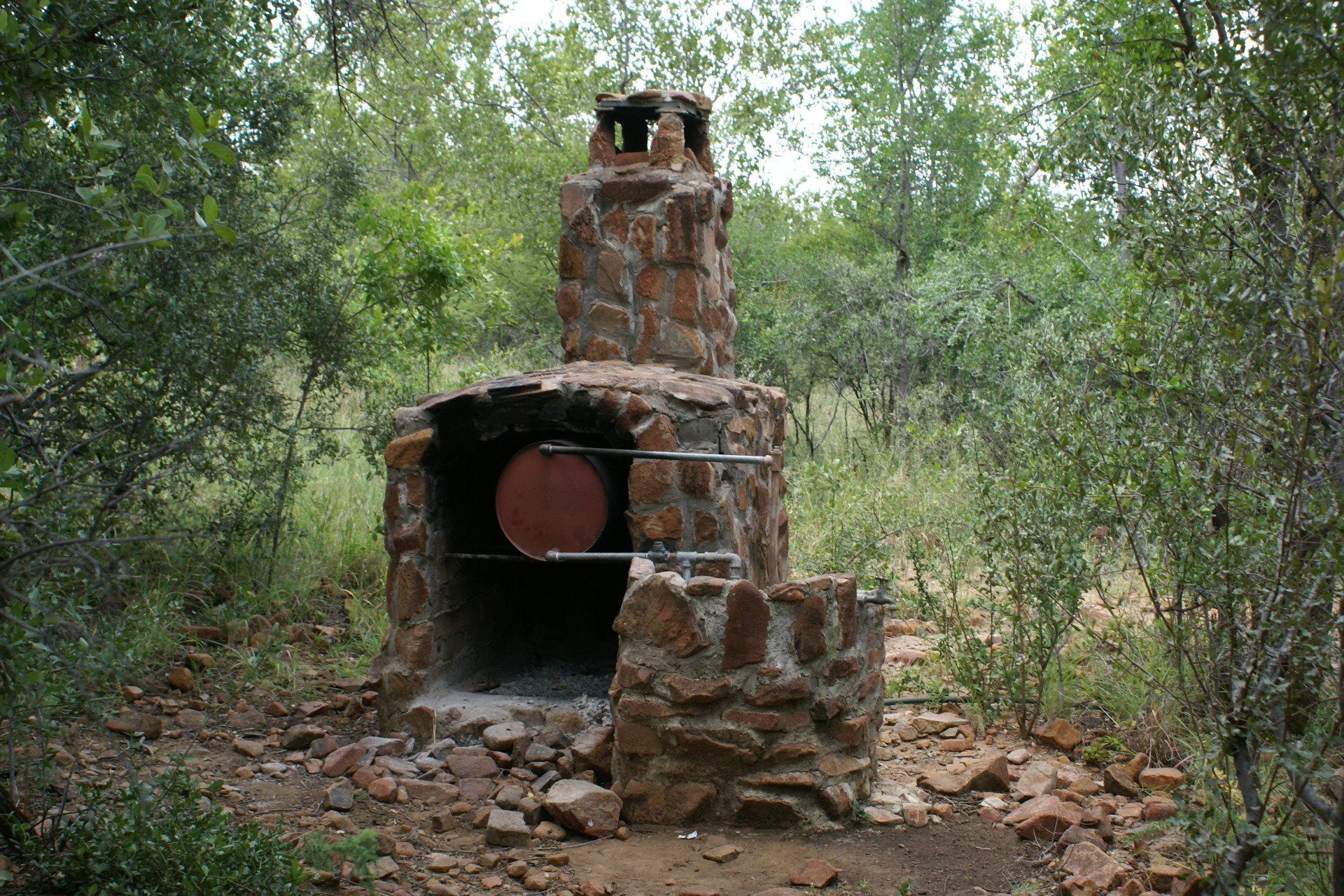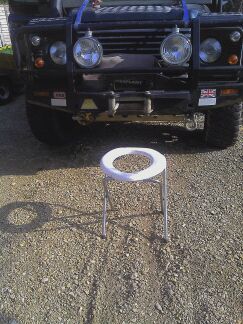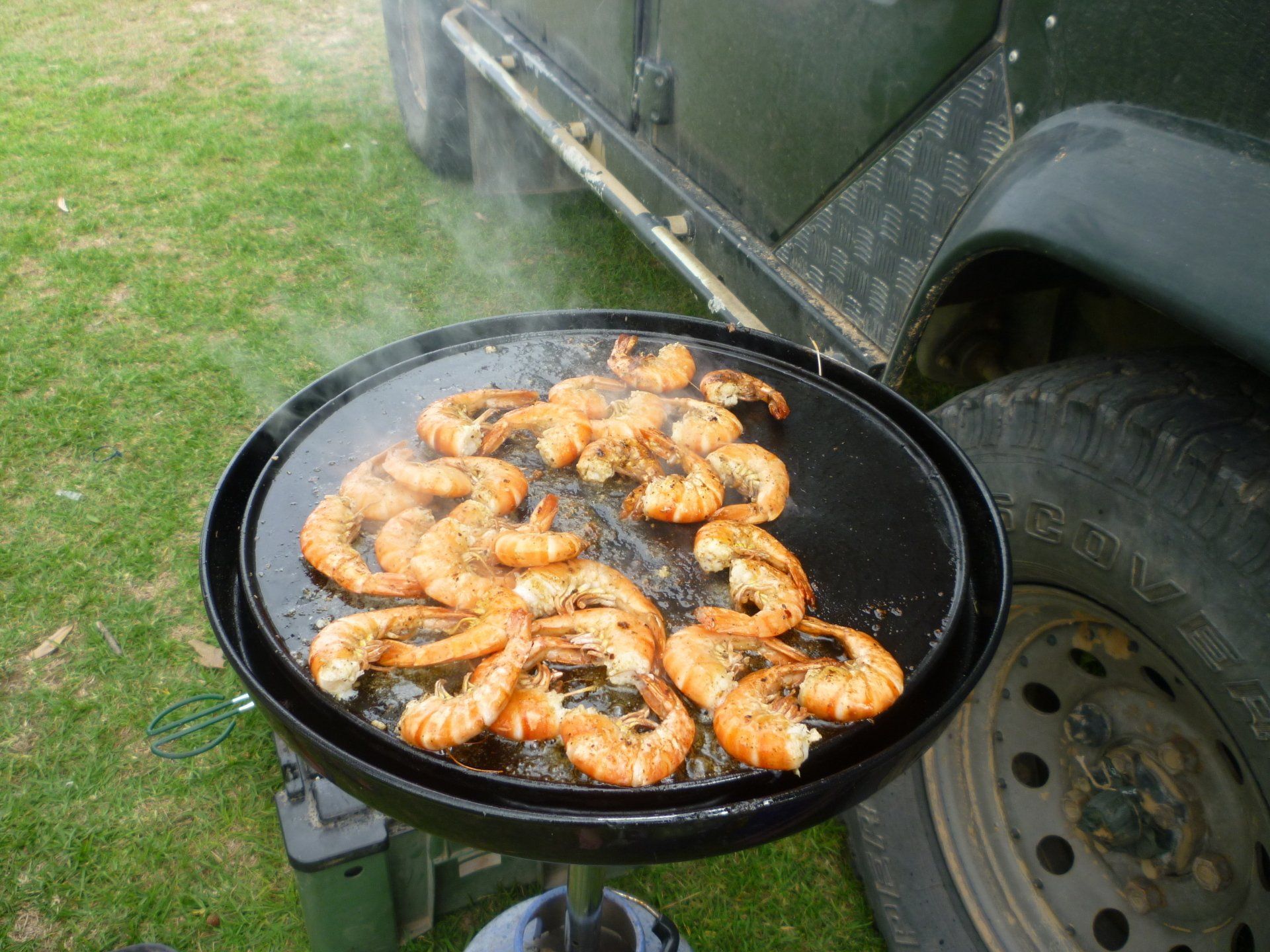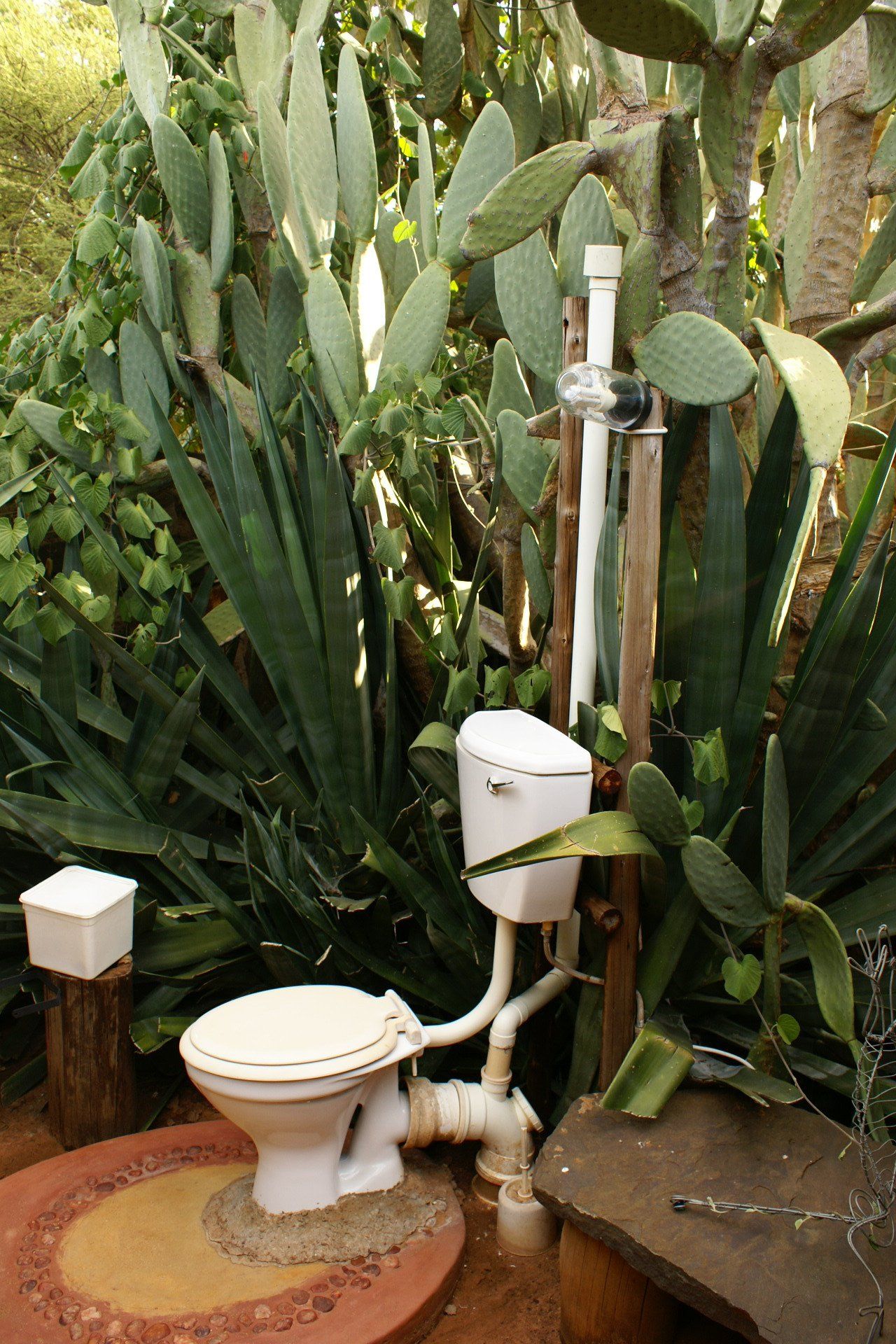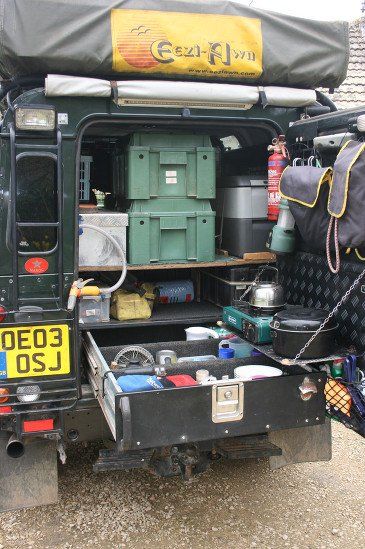Camping
Cooking General
Being Africa we endeavoured to cook on an open wood fire whenever possible – you can’t beat sitting around a crackling fire listening to the African night sounds and gazing at the stars - make sure you know what a tamboti tree looks like as it gives off poisonous fumes when burnt! Most of the time we used a braai fire grille for cooking that stored over the rear spare wheel and held in place by the four legs using a ratchet strap. Also had a tripod with adjustable height grille that fitted over the fire. When wood was hard to get we reverted to charcoal that in some countries was the only fuel for sale roadside (bear in mind any environmental impacts) - in some countries they put it in huge bags making it difficult to lift on to roof.
Carry a length of tubing to use as a blowing stick to get embers going.
We picked up an mbaula (a small single pot charcoal brazier) in Zambia and used this with charcoal to cook when we only needed a single pot – very efficient.
We took our Beauclaire gas cooker that sat on a tripod with cast iron griddle and paella pan from the UK but had to get a gas bottle and regulator in Cape Town. This was an excellent cooking means until it fell off the roof in Zambia, never to be seen again. Replaced with a similar Cadac system but it wasn’t as good. The gas bottle was stored in a Frontrunner system bolted onto the roof rack – purchased in Cape Town as gas bottles shouldn’t be shipped, we believe.
A small portable gas cooker fuelled by a small disposable canister was brilliant for a quick lunch or boiling a kettle; it fitted perfectly on a small drop shelf fitted to the rear door inside panel.
Another essential item was a small low wattage Slow Cooker that ran on 240v. Occasionally we plugged it into a camp hook up when available but invariably used it in the vehicle on the go. Running off a 12v/240v inverter the slow cooker could be loaded up with whatever veg and meat we had in the morning and was ideal if the meat was dubious and likely to be tough as being on for the day, gently agitated by the bumpy roads it was cooked perfectly by the time the camp was set up at the end of the day – still built a fire though!
Water
Obviously a vital fluid and plenty needs to be carried, especially in the remote areas. We fitted a 44 litre water tank under the rear nearside wheel arch with an external lockable tap. From this water was pumped by a 12 volt Whale pump to a Nature Pure purification filter from General Ecology that claims to filter out all microorganisms and viruses, foul tastes etc. meaning even the foulest of water can be used, if desperate. The pump & filter were fitted inside the rear space on the nearside although could be piped to any location. Short hose lead to garden type trigger hose fitting.
We tended to filter water for the kettle and little else as bottled water was readily available for general drinking. However, in the absence of bottled water would consider this item essential as you can catch lots of horrible things from untreated water.
An issue was the ease of filling the tank as the filler hole was not well positioned being just inside door. Would now fit an external locking filler but not let a garage attendant have the key!
In addition to this 44 litres, we kept a 20 litre jerry water can (Blue with wide opening), full and locked on the roof with the fuel containers and could use a 25 litre flat pack designed to sit on the floor in front of the middle seats – never used it. We also kept a 10 litre container full under the middle seats as an absolute emergency. A 20 litre solar shower bag also served as an additional water carrier and handy for the odd shower in remote areas.
Hot Water
Could boil water either on the fire; on the mbaula or small gas cooker in a small camp kettle; in a low wattage 240 volt kettle either on hook-up or on the inverter wired into the vehicle battery; or in a ‘kelly’ or ‘storm’ kettle where a small fire is lit under a jacket of water with a hole in the middle that draws the flames up and boils the water surprisingly quickly.
A black shower bag holding about 20 litres is useful to have but beware – it can become scalding hot if left in the sun all day. Better to store inside vehicle and use at ambient temperature if in sunny climes. Also another source for carrying emergency water if required
Clothes Washing
We used a 5 litre plastic tub with large screw top for washing clothes on the move. This was large enough to hold a day’s worth of ‘smalls’ and tea towels etc. Cold water washing powder was available in most stores. Providing the tub wasn’t filled too much the day’s bumps would gently agitate the washing ready for rinsing on setting up camp. We used two handy collapsible bowls for general washing including clothes and they stood up very well only requiring the occasional superglue on the joints – until one was stolen in Mozambique up a sacred mountain! Take some universal sink plugs as most washing facilities are missing plugs and it isn’t easy trying to soak clothes without one.
Fridges and Cool Boxes
We took our fridge/freezer we had had previously in our motorhome; a Waeco Coolmatic 35 litre capacity running 240 or 12 volt. This was fixed in a frame on the top rear shelf and strapped in. With hindsight we should have gone for a bigger one that would also run on gas to allow it to last longer than the 2 or 3 days parked up that the auxiliary battery would just about cope with. Efficiency very dependent on ambient temperature. Would also invest in a sliding mechanism to make access easier as Judi struggled to get to items at the bottom. Ours was either a fridge or a freezer depending upon the setting; a combination one if room permits, would be more flexible. [Upgraded fridge/freezer and slide out runner fitted back in the UK]
Our electric cool box, purchased in South Africa, didn’t last long and ended up being used as an ordinary cool box – we got what we paid for. We also had an ordinary one we kept for bottles of drink etc. and one stashed in the back for medical drugs.
We had difficulty following a supermarket shop to quickly store provisions, especially if we had a few willing helpers trying to assist and tended to just stuff bags wherever we could stick them – not ideal: best to plan ahead so you can pack up as quickly as possible. Although we never had any problems with the people in this situation there is always the potential for things to 'walk off' - BE ON YOUR GUARD!
Camp Lighting
For general camp lighting we used a 12 volt LED strip light fitted over the rear door along with a 12 volt LED wander lamp with velcro attachment (we placed various strips on side and rear of vehicle for correct positioning) – this also went up to bed with us. Both were bright and being LED, do not attract insects – a brilliant find. Likewise, if we had 240 volt hook-up we used a wander lamp with a yellow bulb that also does not attract too many insects. This was replaced with a standard table lamp after the monkeys in Zambia chewed the old one – not an ideal replacement. Most of the time the light from the fire was sufficient, supplemented by head torches, ordinary and wind-up torches. We also carried a 12 volt plug in spot light with headlight bulb for game drives and checking out strange noises in camp!
Camp Chairs
We settled for fold-up chairs that took up less room than conventional camp chairs and stacked them on the roof. Fairly easily bought in the larger African supermarkets and specialist shops – we had to carry up to 4 to cater for guests but normally just the 2, until one was stolen in Mozambique.
Camp Tables
We took fold-up aluminium tables that stacked well on the roof. The small one we had had for years ended up with a bent leg and unusable, due to being over-tightened on the roof by the ratchet straps. The large table survived unscathed. I had reduced the height of the table by taking about 5 cm off the bottom of the legs to make it a better height to sit at in the chairs but this made it the wrong height for standing at for food preparation, washing, etc.: Judi, apparently, blames her bad back on my modified table!.
Toilets
Some countries had excellent facilities and some didn’t!
When bush camping best to dig a hole otherwise any deposits will attract hyena and the like.
Take a sturdy shovel, expedition type with a point, to dig your hole – easy on sand but not so where the soil is hard.
We took a Folding Toilet Seat that fitted over the hole, sourced in the UK - a collapsible seat that did just that!
Clothing
Obviously a very personal thing but my advice would be to travel light. We took far too much because we packed clothes into the Land Rover before it was shipped and then took suitcases with us to Cape Town with more clothes. Although we needed clothes to see us through to the arrival of the Land Rover we ended up doubling up on a lot of items and immediately left a pile of clothes and the two old suitcases for distribution to the needy. Further sort outs led to further handouts on the way – no bad thing but we didn’t need to take so much in the first place!
There’s no point having loads of clothes stashed away as the reality is you’ll only use those to hand. I tended to live in sandals, shorts and safari shirts - they have handy pockets and can get covered in dust and still look cleanish. Judi tended to wear sandals, shorts and tee-shirt or lightweight dresses. We didn’t worry too much what we looked like on the basis that we probably weren’t going to meet anyone we knew that day - and we looked ready for the bush. That’s what I joked but I’ve been told that I must mention the fact that Judi kept on top of the washing and we usually looked quite respectable. Additionally, if it’s good enough to get into The Sunbird Capital Hotel at Lilongwe it’s good enough to get into most places!
Camp & Park fees - varied from country to country with probably South Africa giving the best value of fees to facilities: others, such as Tanzanian Park camps are extortionate with some having awful facilities. Likewise, park fees varied enormously from country to country as did the accessibility and facilities.
The South African Wild Card we purchased saved us a small fortune on park fees. International Visitors have to buy a 12 month card covering all the National Parks of South Africa and Swaziland: we paid R1640 (£120) – as at 2020 now has gone up to R4850 (£230) for a couple. If time is to be spent in South Africa it is well worth considering: we saved money after 3 weeks.
| SA | Bots | Zam | Tan | Mal | Moz | Swaz | Zim | Nam | |
|---|---|---|---|---|---|---|---|---|---|
| Total days camping | 61 | 63 | 50 | 39 | 22 | 22 | 5 | 18 | 27 |
| Total camping costs | £630 | £755 | £481 | £384 | £152 | £242 | £39 | £192 | £499 |
| Average cost pppn | £5.16 | £6.23 | £4.81 | £4.92 | £3.47 | £5.50 | £3.90 | £5.33 | £9.24 |
| Park Fees | £16* | £696 | £503 | £694 | £215 | £139 | £4* | £192 | £160 |
| Park Days | 32 | 35 | 15 | 14 | 18 | 12 | 4 | 14 | 12 |
| Average cost per person per Park Day | £0.25* | £9.95 | £16.76 | £24.78 | £5.97 | £5.79 | £0.50* | £6.85 | £6.66 |
| * + Wild Card + most fees included in camp fees. |
Below table pertains to 2010 camping costs and park fees but does give an indication of relative variations between countries.
